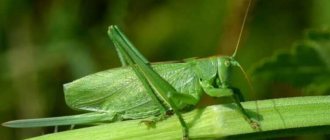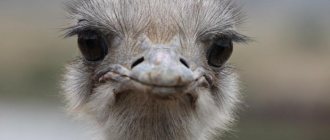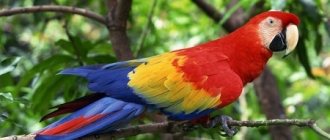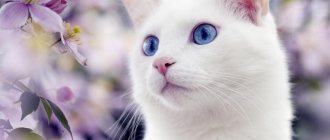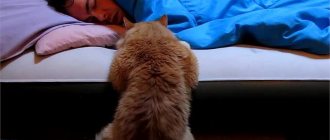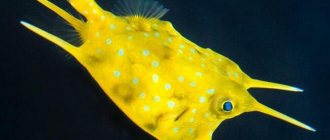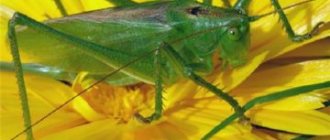Bright eyes in the night
- Fact:
The Holy Inquisition, which was active in medieval Europe, declared cats to be minions of the devil and witches. - Fact 2:
In the Middle Ages, thousands of cats were burned alive in bonfires and drowned in bags along with supposed witches. - Fact 3:
Behind the retina of these animals there is a special layer - tapetum, which contains a large percentage of photoluminescent pigment - Fact 4:
Maximally dilated pupils occupy almost the entire area of the iris, reflecting the light flux from the entire area of the fundus
The cat is an adroit hunter, and its vision works excellent even at night. But such a unique feature of cat eyes as the ability to glow in the dark did not always bring this animal only benefit.
The Holy Inquisition, which was active in medieval Europe, declared cats to be minions of the devil and witches. The basis for this was the activity of cats in the dark, as well as the vertical pupils and burning “hellfire in the night” eyes of these small predators. In addition, pagans revered cats, and early Christians tried in every possible way to destroy the roots of alien beliefs. During the Middle Ages, thousands of cats were burned alive in bonfires and drowned in sacks along with supposed witches. These brutal massacres continued until the 19th century, which marked the beginning of the Age of Enlightenment.
However, the barbaric attitude towards cats was characteristic only of those European countries where the Catholic Church dominated. Among the pagans of Africa and the Eurasian continent, the cat has always been revered as a sacred animal. In Rus', cats have been considered since ancient times as guardians of the hearth, and before the advent of Christianity they were associated with the names of the deities Rod, Veles and Mokosh. And the unique vision of these four-legged animals was explained by the need to travel between light and darkness - the worlds of the living and the dead, people and gods.
Russian Orthodox Christianity has retained this favor towards cats, despite their unusual habits. So, to this day, a cat is allowed to enter an Orthodox church and wander around it wherever it pleases. For example, dogs are prohibited from walking even in the area next to the church.
Animals with glowing eyes at night
Have you ever wondered which animal's eyes glow in the dark?? Or maybe you're wondering how to recognize glowing eyes in the dark?
Let's look at common animals with bright glowing eyes at night, as well as some of the more remarkable hunters and crawlers.
These are the most typical animals that reflect light at night. Whether you point a flashlight at them or have glowing eyes when filming them on camera.
What is Tapetum Lucidum?
The tapetum lucidum is a layer of tissue in the eye of many vertebrates. It is located just behind the retina and is a retroreflector. The tapetum lucidum always reflects visible light back through the retina, increasing the light available to the photoreceptors. This contributes to the well-known excellent night vision of some animals.
SEE: 10 Animals That Don't Make Any Sounds (Why Are They So Silent)
glowing scorpion
Scorpions are not bioluminescent animals, but they emit bright green light when exposed to certain wavelengths of ultraviolet rays. They can also glow in the moonlight. Scientists debate a lot about why scorpions flicker in certain conditions. One plausible hypothesis is that arthropods control light in this way in order to decide whether to hunt or not.
What colors make animals' eyes glow at night?
When you encounter an animal with glowing eyes at night, the color is usually:
- red
- Yellow
- Green
- white
- orange
In this amazing post, we will take a very close look at all these animals. We will also display them by eye color in a series of photos..
Just remember that you can't be sure that animals will always glow the same color at different times.
We'll come back to this at the end of the post - now is the time to take a look at some of these amazing creatures with sparkling eyes at night!
Causes of the unpleasant syndrome
Discharge from the eye becomes a protective reaction of the body to the effects of aggressive environmental factors. It could be an infection, an allergen, or mechanical damage. In most cases, they suggest that a person, and in particular his organs of vision, are affected by one or another ailment.
What diseases can discharge from the eye indicate:
- conjunctivitis (allergic, bacterial or viral);
- dacryocystitis;
- trachoma;
- blepharitis;
- keratitis.
Discharge is also possible when an infection penetrates into the organ of vision, weakened by surgery, during the rehabilitation period. Uncomfortable or dirty lenses can also cause an unpleasant symptom. Discharge from the eyes of a person can appear when exposed to chemicals and ultraviolet radiation, as a result of long work at the monitor due to dryness and fatigue of the visual organs.
Inflammation of the conjunctiva most often causes a similar symptom. The cause may be infection of the organs of vision with pathological bacteria and viruses or a reaction to an allergic irritant. This disease can lead to serious consequences in the form of endophthalmitis or corneal ulcers. Inflammation of the lacrimal sac or dacryocystitis is caused by dysfunction of the nasolacrimal ducts, which provokes congestion in the eye. Trachoma, that is, a chronic inflammatory process in the conjunctiva and cornea, is caused by chlamydial infection. With keratitis, the cornea becomes inflamed for infectious reasons.
Blepharitis, manifested by inflammation of the ciliary edge of the eyelids, may have several causes:
- excessively oily skin;
- low-quality cosmetics;
- reaction to demodex dust mites;
- infections of neighboring organs or brought from contaminated objects.
Discharge from the eye is usually accompanied by additional unpleasant symptoms:
- cloudiness, burning and itching in the organs of vision
- painful sensation and increased lacrimation;
- redness, swelling, photosensitivity.
With bacterial or viral lesions, cough, runny nose, aching sensations in the joints, and fever are also possible.
Which animals' eyes are RED at night?
Many animals may have red or orange eyes that glow at night. Their eyeballs have a reflective layer behind them that allows light to be reflected back to those who look at them.
The reflective color of the eyes at night depends on several factors, including the animal's actual eye color, the type of light, and how the retina is structured.
Alligators
Alligator crocodiles have quite large eyeballs compared to their size. They often appear red in the dark, making them look even more terrifying than before the night.
Owls
Another animal with wooden red or orange eyes in the dark is owls. They usually hunt just before dark and have incredibly good hearing. But they also have good eyesight.
Their eyes really stick out in the forest when you see two adorable red dots staring right at you in the dark.
SEE: 10 Animals That Don't Make Any Sounds (Why Are They So Silent)
The owl bird has special giant eyes in the animal world. Their eyes are tunnel shaped, which means they have to turn their head to look around. This is not a problem, however, because owls can turn their heads 270°.
Dark orange eyes are very beautiful, and this is probably why owls symbolize wisdom and knowledge.
Rabbits
Rabbits also have special eyes. They usually have a light red tint in the dark when you see them in the camera or point a light source at them.
Sometimes they can be orange or even pinkish-red.
Moreover, the red color comes from the light reflected from the back of their eyes.
They also have a reflective layer behind their eyeballs that reflects light back to you when you look at it. We'll explain this feature in detail at the bottom of this post.
Cats and Kittens
Cats are known to be true masters when it comes to eye color. Cats can have a wide variety of eye colors. Not only at night, but also when it comes to their actual eye color during the day.
However, this special cat does have 2 different eye colors. One eye is mostly red and the other is green.
Luminous lenses for the eyes: the principle of “work”
Contact correction products are very popular among people with various refractive errors: myopia, farsightedness, astigmatism and others. Modern manufacturers offer a wide selection of contact lenses designed not only to correct vision, but also to change appearance. Colored optical products allow you to completely or partially transform the natural color and even the pattern of the iris. Luminous eye lenses are especially popular among young people. With their help you can create a truly spectacular and extraordinary image.
In daylight, these optical products look like ordinary colored lenses with a bright color. But when placed in a dark room with ultraviolet lamps, they begin to glow. This effect is achieved through the use of a special fluorescent dye in the product composition. Particles of this substance have the special property of reflecting ultraviolet rays, which is why the glow effect is achieved. Glowing lenses are often called club and neon lenses, because in ultraviolet rays they shine with bright neon light, attracting the attention of others. They are especially in demand on the eve of Halloween, when many people strive to create a mystical image. Anime fans often use these optical products during cosplay (costume games) to transform into the image of their favorite character.
Connoisseurs of clubbing choose neon lenses with acid-bright phosphorescent light to declare themselves as an unusual creative personality.
Luminous lenses appeared in the early 90s, but were not immediately available to the general public. They were mainly used in cinema as an accessory to create a stage image. For example, Darth Maul from Star Wars looked terrifying thanks to the use of bright orange neon lenses. Currently, these correction products have become available to the mass consumer and are the latest fashion trend. No less popular are carnival lenses, on the surface of which original designs are applied: fire, dollar, cat's eye, cobweb and others.
Which animals have YELLOW eyes at night?
Now let's shift the focus to animals with yellow, shiny eyes. This is common among animals and we find quite a few species with glowing yellow eyes at night.
The Bears
Bears are an example. During the day, bears usually have dark brown eyes. But when light reflects on their eyes at night, they usually appear bright yellow.
They are sure to scare a lot of people if you see the eyes of a bear at night..
Cats
As we mentioned above, cats can have any eye color. At night, the cat may stare back at you with glowing bright yellow eyes that can pierce you.
Eye color is determined by two pigment colors, melanin and lipochrome. The mixture of pigments (or lack thereof) determines what color a cat's eyes will be. But by night, light can change the color of the eyes, reflecting only part of the light spectrum.
These two sets of yellow cat eyes can look quite scary in the dark!
Deer
Another animal you commonly encounter at night is the deer. They will often look directly at you as you drive or walk through the woods.
A deer's eyes often glow yellow at night, simply because light is reflected back to them.
Raccoons
Another animal you may have in mind when you notice a yellow set of eyeballs is the raccoon.
Raccoons are also nocturnal. (Examples of nocturnal animals include bats, skunks, and owls. Nocturnal animals sleep during the day for a variety of reasons.
Most nocturnal animals sleep during the day and are active at night to avoid active predators during the day) and therefore, they also have a reflective layer behind their eyes. They usually reflect yellow light onto their back.
Chinchillas
Chinchillas are quite popular as exotic pets.
A chinchilla's vision is blurry and not as good as ours. Although chinchillas can see in color, they probably don't see as many colors as we do.
Although chinchillas can see what is going on around them, they cannot see details like we can. … Chinchillas can get away with relatively poor eyesight because they hear so well.
Their yellow eyes really glow in the dark and seem very focused on the photographer.
Interesting information about the features of cat vision
For the most part, cats' eyes glow green or yellow. The intensity and shade are determined by the amount of zinc and riboflavin in the tapetum layer. There are also rare glow colors. For example, the eyes of Siamese cats emit red, crimson light in the dark. A decrease in the brightness of the effect comes with age. In older cats, the density of the lens increases, reducing the ability to reflect photons. The cause of dim light in young cats may be glaucoma or cataracts.
Cat eyes have several unique features:
- The visual acuity of these pets is almost 10 times higher than that of humans.
- The viewing angle of cats is 20° greater than that of humans. Our radius is 180°, for pets it is 200°.
- In terms of color perception, cat eyes are inferior to human eyes. Animals distinguish only a few shades. They see well the tones of green, black, blue, white, and gray. They do not perceive the remaining sectors of the color spectrum. It was previously believed that cats see the world in black and white, but recent research disproves this claim. There is no need to think that limited color vision causes inconvenience for cats. Pets don’t worry about the fact that they can’t distinguish between yellow and red, they don’t need it.
The quality of vision of these animals can be appreciated by two facts. A cat can see objects at a distance of half a kilometer or more. It can clearly see the smallest details of an object at a distance of 60 meters. The most vigilant person does not have such qualities.
There are some differences in the perception of static and moving objects. Animals can better see an object that is moving. Moreover, they see objects moving horizontally most clearly. The cat sees vertically moving objects worse.
It is known that dogs see nearby objects better, but their vigilance decreases when they move away. Cats' vision organs are structured differently. These pets are farsighted. They have difficulty seeing objects located nearby, but are excellent at viewing distant targets.
Animals with glowing eyes at night
Panthers
The panther has golden eyes. Their eyes
golden in
color
.
Males are
usually larger than females.
The last animals we will see in the dark with yellow eyes are Panthers. These are large cats that hunt at night and their yellow eyes are very intense.
Most cats (big and small) have yellow eyes even in the dark. But most cats don't have yellow eyes when their face is on fire...
But Panthers can have very beautiful yellow eyes... Although sometimes they can look greener.
Myths, legends and superstitions
In different countries, cats with glowing eyes have acquired their own legends. The most popular ones are listed below:
- Egypt. Animals received their ability from the goddess Bastet. During the day, they protected their owners from disasters and treated them from illnesses, and at night they reported to the goddess about their work. That is why night vision was extremely necessary for them.
- Ancient Rome. The Roman legend is about a cat who escaped from an evil and cruel circus owner. For its bravery, the animal received a gift from the goddess Libertas - the ability to illuminate the path with its own eyes.
- Japan. According to Japanese mythology, the five main gods attracted felines to serve in the Maneki-Neko temple, rewarding them with a special ability to patrol the territory. Also, the mysterious glow brought good luck to everyone it touched.
In addition to their glowing eyes, people were frightened and at the same time fascinated by 2 more features of cats: healing and predicting disasters. Over time, a scientific explanation was found here too. In the first case, the animal was simply attracted by the heat from the patient, and in the second, by ultrasonic and temperature fluctuations inaccessible to human hearing and touch.
Which animals have GREEN eyes at night?
We will continue to list some animals with green eyes at night. This is a little less common because most animals have red or yellow eyes reflected at night.
Dogs
A dog sits on the floor in the dark.
Documents can also have green eyes in the dark. This cute golden retriever puppy looks cute with his eyes glowing in the dark.
If you see glowing eyes of an animal in the dark of the night, it will most likely be a dog or cat. This is simply because they are considered to be one of the most common animals in human-inhabited areas.
Take note: You can try hot dog beds for dachshunds to make them more relaxed.
Foxes
Foxes have amazing eyesight. In fact, they can see as well as a cat. Their eyes are very similar to a cat's, thanks to their vertically cut pupils. Foxes are also very fast.
The fox's eyes are also very intense at night. When hunting at night, they are usually reserved. But when you encounter them, remember to look for green or yellow eyes in the darkness of the night.
This fox has mostly green and white eyes when it looks at you.
Opossums
Possums often leave a green reflection when illuminated at night. Here are five possums in a tree.
Which animals have WHITE eyes at night?
Sometimes animals' eyes reflect white light at night. Lastly, we'll look at a few animals with bright white eyes at night.
All three species were photographed with flash on the camera. This allows the light to reflect back into a very white and bright color.
Coyotes
Coyotes really do have golden brown eyes.
Coyotes' eyes are always golden brown, so researchers were surprised to learn of five California coyotes with pierced baby blue eyes.
Hear that the photographer captured a coyote with his lens. The coyote stops right in front of the camera and its eyes are very white.
SEE: 10 Animals That Don't Make Any Sounds (Why Are They So Silent)
Deer
As we saw earlier, deer often have yellow eyes in the dark. This, sometimes the eyes appear a very bright white color.
This is true if you use the flash on your camera. The white light from the flash reflects off the back of the eyes and gives the photo a pure white color.
Tigers
This is not an animal you want to encounter at night. If a tiger with white eyes looks straight at you in the snow. It is very difficult to see in the snow at night, but his glowing eyes give it away.
Other animals with glowing and reflective eyes include:
- Rats
- Skunks
- Ferrets
- Squirrels
- Horses
- Pigs
- Spiders
- Lemur
- Camels
- Lantern fish
- Cows
- Goats
- Zander
- Kangaroo
That's right, most of these animals are nocturnal, but there are also deep-sea animals on the list.
It is especially important to have a good understanding of whether there is a predator in the sea. (or if you are being hunted!). Water can make it difficult to recognize patterns and movements at night, those big eyes with reflectors can help you too!
This is interesting
People continue to discover new species of animals with glow-in-the-dark eyes by looking at their reflections in photographs. Interestingly, due to this special structure of the visual organs, trained horses and dogs help us in search and rescue operations carried out at night - so this is another advantage that we receive thanks to our smaller brothers. People have even used the idea of the tapetum lucidum layer to improve safety on our roads by creating so-called "cat's eyes" - synthetic retroreflectors that are used in road markings. Do you think it is possible for people to have eyes glowing in the dark? Let's find out!
Why do the eyes of some animals glow at night?
We find this characteristic in several vertebrates.
Some animals' eyes glow at night due to a thin, reflective layer behind the eyes. (behind the iris). It's called “Carpet Bright.” This layer reflects light back to you when you look at the animal in the dark. This phenomenon is also called “eye glare.”
This means that light passes through the retina twice and is reflected back to you in a wide range of colors or different colors.
It could also mean that the light you see is simply a reflection of a light source pointed at them. This usually comes from a flashlight or camera flash. When a certain light is reflected back, it can be red, yellow, green, or white colors.
The light is reflected directly towards the light source to give the retina a clearer and brighter image for analysis. For cats, the reflective effect increases vision by over 40%, giving cats incredible night vision.
Cat eye glow effect
A cat walking in a dark room or along the street at night can cause a certain frightening sensation, a slight horror. Her eyes “glow” with a greenish, yellowish or even red light. Scientists have long learned the secret of this phenomenon. The “glow” of a cat’s eyes comes from a layer of blood vessels located on the eyeballs behind the retina. This shell is called tapetum. It has a reflective property, which creates a glowing effect.
Photons penetrate the retinal tissue and are captured by the tapetum, which reflects the rays. Nature did not give this property to cats in order to provide them with a mysterious, mystical appearance. It is thanks to the presence of the tapetum that animals are ideally oriented in the dark, since the retina of the eye receives significantly more light compared to the human eye under the same lighting conditions. To distinguish objects, fluffies need illumination six times less than for humans. Cats are predators, and they need keen vision at night for successful hunting. It also serves as protection against sudden attacks by enemies and allows you to detect danger in a timely manner.
The tapetum cannot glow; the effect is created only when photons from a natural or artificial light source hit the shell. If the cat is in complete darkness, there will be no mystical sparkle in the eyes. But it will still be able to navigate perfectly, since the animal is helped by its well-developed sense of smell, hearing, and touch.
Animals with glowing eyes at night
It is genius for animals to add more light to the retina. A set of animals without this feature (and humans) will only allow light to pass through the retina once.
But the reflection will add more light and detail to the retina so that the animal can see better in the dark.
This allows our nocturnal friends to see better and further in the dark. This is an advantage for both predators and prey, and is a good reason to stay indoors if you live near wild animals. They are likely to have much more better night vision than you!
They are also animals that see very well in the dark, and are called nocturnal animals. When light is secondarily reflected by the retina, the animal is more likely to sense and see in the dark.
How to explain to children
If your interest in this topic was sparked by a child's question and you are looking for an easy way to teach about the structure of a cat's eyes, the video below will help you:
Is your baby still very young, but very interested in the question asked? Well, fairy tales will help you. Usually, in order not to mislead the child, they talk about a cat that got lost in the dark. The plaintive call of the animal was heard by the moon or the lunar sorceress. Taking pity on the purr, she endowed the cat’s eyes with a special property: collecting light in the darkness of the night. The cat returned home and everyone lived happily ever after.
As you can see, this fantastic story tells about the real reason for what is happening, but in a soft and understandable form for a child. It’s up to you to decide whether to use real data or imagine something unnatural, but keep in mind that most strong beliefs are formed precisely during the period of whys.
How to recognize animals by eye color at night
Does this mean that at night you can recognize animals by their eye color??
No, not at all.
The reason is that you cannot be sure that the animal will always reflect the same color to you. It can vary greatly depending on a variety of factors, which we will look at below.
Sometimes the color can be yellow, and sometimes white or even green.
As we looked at the statements above, it all depends on various factors:
- The color of the light is directed towards the animal (VEL, moonlight, flashlight, etc.)
- Color of animals' eyes (which can vary greatly even within the same species)
- Size and structure of the retina
- Distance between you and the animal
- The angle you're looking at
So you can't be sure that a certain species will always reflect the same eye color. If you look at how the eyes glow at night, you'll notice above that we have, for example, deer and cats with yellow and green eyes.
You will most likely need to learn more facts about animals to recognize them at night. It is much better to look at behavior, speed, size, etc. Animal.
If you can only see the animal's eyes, you should try your best to determine the distance between the eyes and how far they are from the ground. If it is a large animal with large eyeballs, you should keep a safe distance. But remember that even small animals are dangerous at night.
So, if you don't know what you're dealing with, keep your distance and don't look directly at the animal as this can cause aggression in some species.
Discharge in children
A common cause of eye discharge in newborns is dacryocystitis. Caused by obstruction of the nasolacrimal duct due to its underdevelopment. In this case, the baby develops thick yellow discharge from the eye, redness, and swelling. The child rubs his eyelids and is capricious. Therapy: massage of the lacrimal sac, rinsing with antiseptics, using topical antibiotics. If ineffective, wash the nasolacrimal duct using a probe.
The causes of discharge from the organ of vision in children of different ages are bacterial and viral lesions. Viral discharges are characterized by whitish discharge, while bacterial discharges are characterized by yellowish discharge from the eyes of a child. The child becomes whiny, lethargic, and scratches his watery eyes. They are treated by washing with antiseptics and using local antibacterial agents. If there are crusts, soak them before removing them so as not to damage the skin.
Why do animals have better night vision?
As we stated above, some animals have a reflective layer on the back of their eyes that allows them to see better in the dark. But that's not the only reason they have better night vision.
Another reason is that they can see a wider range of colors.
- They can see ultraviolet and infrared light.
- Many nocturnal animals can see both ultraviolet and infrared light. For example, bees can see ultraviolet light.
- They have bigger eyes.
- Some animals have larger eyes, which allow them to let in more light. This means they can sense more movement and shapes in the dark and see more detail at night.
- They have more light sensors
- Some animals have more light sensors in their eyes, called “Rhodopsins,” and they let in more light.
- however, this advantage has a downside. These animals are usually relatively colorblind because they don't have other types of sensors that pick up light colors.
Glow in other members of the cat family
Not only domestic cats, but also wild ones can boast of glowing eyes: manulas, pumas, lynxes, cheetahs, tigers and everyone else. A similar effect is observed in other tapetum owners:
- spiders;
- crustaceans;
- fish;
- mice and rats;
- rabbits;
- dogs;
- horses;
- deer.
These animals differ from the cat family in having a less pronounced glow. Only those who are alien to nocturnal life or the need to escape from nocturnal predators have no tapetum.
